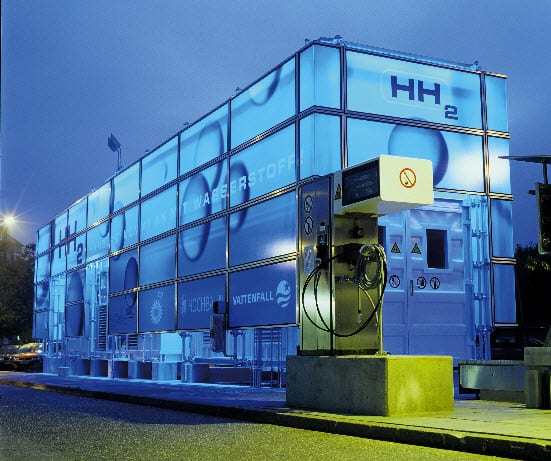
Stanford University researchers create hybrid fuel cell
July 9, 2011Singular alternative fueling methods, such as solar or wind power, are well established.
Many of the technologies used for such methods have advanced to a point where further development is, more or less, counter-intuitive. Solar energy is already one of the more efficient forms of alternative fuel, and continuing to improve upon its faculties requires a level of technology not yet available. However, the world is still in need of more efficient alternative fuels. To meet demand, focus has shifted from singular fueling methods to hybrid systems, specifically solar hydrogen fuel cells.
A team of researchers at Stanford University in California have been developing hydrogen fuel cells that use solar energy as a catalyst. Conventional fuel cells use a platinum catalyst, which is both costly and inefficient, as well as its toll on the environment in the form of extensive excavation to obtain the material.
Solar energy offers a unique solution to this problem in that it creates a fully self-sustaining system that relies neither on exotic material nor harmful environmental practices.
Researchers are using a photosensitive silicon catalyst, which is immersed in water. As the catalyst absorbs light, it produces a flow of electrons which are then injected into the water to slit it into its basic elements, oxygen and hydrogen. The catalyst is covered in titanium dioxide to protect it from corrosion within the fuel cell. The system is still in early stages of testing, but it has thus far shown to be formidable compared to commercial fuel cells already available.



 HFN News is your leading source for fresh hydrogen and renewable energy updates. Amid the fast-paced growth of hydrogen companies, we provide top-notch news and insights about this exciting sector. Our coverage spans from hydrogen cars to global sustainable initiatives, and we highlight the latest in green jobs and developing hydrogen hubs. We invite you to share your local hydrogen news and explore today’s renewable energy job listings on our site. Thanks for choosing HFN News as your trusted guide to the hydrogen and renewable energy world!
HFN News is your leading source for fresh hydrogen and renewable energy updates. Amid the fast-paced growth of hydrogen companies, we provide top-notch news and insights about this exciting sector. Our coverage spans from hydrogen cars to global sustainable initiatives, and we highlight the latest in green jobs and developing hydrogen hubs. We invite you to share your local hydrogen news and explore today’s renewable energy job listings on our site. Thanks for choosing HFN News as your trusted guide to the hydrogen and renewable energy world!